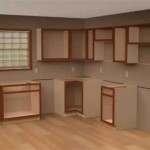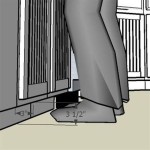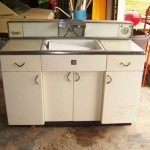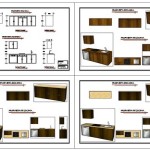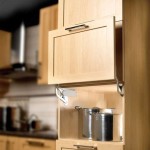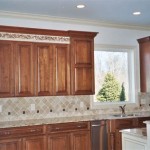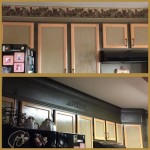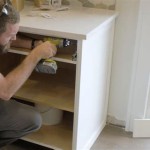Where To Install LED Strip Lights Under Cabinets: A Comprehensive Guide
LED strip lights have become increasingly popular for under-cabinet lighting due to their energy efficiency, ease of installation, and versatility. They provide focused task lighting for countertops and can also create a warm and inviting ambiance in the kitchen. However, the optimal placement of these lights is crucial for achieving the desired effect. This article provides a comprehensive guide on where to install LED strip lights under cabinets to maximize their illumination and aesthetic appeal.
Before delving into specific placement options, it is important to consider several preliminary factors. First, determine the primary purpose of the under-cabinet lighting. Is it primarily for task lighting during food preparation, or is it meant to enhance the overall kitchen atmosphere? The answer to this question will influence the brightness and color temperature of the LED strip lights chosen. Second, assess the existing lighting conditions in the kitchen. A room with limited natural light will require brighter LED strip lights compared to a well-lit space. Third, examine the design and style of the kitchen cabinets. Modern, minimalist kitchens might benefit from concealed lighting, while more traditional kitchens might allow for slightly more visible installations.
Furthermore, consider the type of LED strip lights being used. Some strips are more flexible than others, which can affect their suitability for certain installation locations. Pay attention to the presence of any obstructions, such as cabinet lips or door hinges, which may interfere with the light distribution. Finally, ensure that there is a readily accessible power source for the LED strip lights. If a direct power outlet is not available, consider using a low-voltage transformer or battery-powered options.
Optimal Placement for Task Lighting
When the primary goal is to provide effective task lighting for countertops, the ideal placement of LED strip lights is typically along the front edge of the underside of the cabinets. This positioning directs the light downwards, illuminating the work surface directly in front of the cabinets. This eliminates shadows and provides ample light for food preparation, reading recipes, and other tasks that require good visibility.
To ensure even illumination, install the LED strip lights as close to the front edge as possible without the lights being directly visible from eye level when standing in front of the countertop. This requires careful measurement and consideration of the cabinet overhang. A slight recess may be necessary to conceal the lights and prevent glare. Using a diffuser can also help to soften the light and create a more uniform glow.
For cabinets with a recessed bottom edge, the LED strip lights can be installed within the recess. This provides a clean and concealed look while still effectively illuminating the countertop. In this case, consider the depth of the recess and choose an LED strip light with a suitable profile to fit comfortably within the space. Ensure that the strip is securely attached to prevent it from falling or shifting over time.
If the cabinets have a decorative trim or molding along the bottom edge, it may be necessary to install the LED strip lights behind the trim. This can create a subtle and elegant lighting effect, but it may also reduce the amount of light reaching the countertop. In this scenario, it is important to choose brighter LED strip lights to compensate for the obstruction. Alternatively, the trim can be modified to allow for better light transmission.
When installing LED strip lights under corner cabinets, pay particular attention to the angles and gaps between the cabinets. Ensure that the light is evenly distributed across the entire countertop area, including the corners. Cutting and connecting the LED strip lights may be necessary to achieve a seamless and continuous line of light. Use appropriate connectors and follow the manufacturer's instructions carefully to avoid damaging the lights.
Placement for Ambient Lighting
If the primary objective is to create a warm and inviting ambiance in the kitchen, the LED strip lights can be positioned further back under the cabinets. This allows the light to reflect off the backsplash and walls, creating a softer and more diffused glow. This approach is particularly effective for creating a relaxed and comfortable atmosphere in the evening.
When using LED strip lights for ambient lighting, consider choosing a warmer color temperature, such as 2700K to 3000K. This creates a cozy and inviting feeling. Dimmable LED strip lights are also a good option, as they allow for adjusting the brightness to suit different moods and occasions. Using a dimmer switch can help to create a more versatile lighting scheme.
For cabinets with a light-colored or reflective backsplash, placing the LED strip lights closer to the back will maximize the amount of light reflected into the room. This creates a brighter and more spacious feeling. Conversely, for cabinets with a dark or matte backsplash, placing the LED strip lights further forward will prevent the backsplash from absorbing too much light and creating a dull effect.
In kitchens with open shelving above the countertops, consider extending the LED strip lights to the underside of the shelves. This can create a cohesive and integrated lighting scheme, highlighting both the countertop and the items on the shelves. Ensure that the LED strip lights are securely attached to the shelves and that the wiring is properly concealed.
To create a more dramatic and visually interesting effect, consider using color-changing LED strip lights. These lights can be programmed to cycle through different colors or to display a specific color based on the mood or occasion. Color-changing LED strip lights are particularly effective for creating a party atmosphere or for adding a touch of personality to the kitchen.
Concealing LED Strip Lights for a Clean Aesthetic
Regardless of whether the primary goal is task lighting or ambient lighting, concealing the LED strip lights can create a cleaner and more sophisticated look. There are several methods for concealing LED strip lights under cabinets, each with its own advantages and disadvantages.
One common method is to use LED strip light channels or profiles. These channels are typically made of aluminum and have a diffuser cover that softens the light and conceals the individual LED diodes. LED strip light channels are available in various shapes and sizes, allowing for a customized and professional-looking installation. They also provide a heat sink for the LED strip lights, which helps to extend their lifespan.
Another method is to install a light valance along the bottom edge of the cabinets. A light valance is a strip of wood or other material that is attached to the underside of the cabinets to conceal the LED strip lights. Light valances can be custom-made to match the existing cabinet style and finish. They provide a clean and seamless look, but they can also reduce the amount of light reaching the countertop if not properly designed.
A third option is to use recessed LED strip lights. These lights are designed to be installed flush with the underside of the cabinets, creating a very clean and minimalist look. Recessed LED strip lights require more extensive installation, as they involve cutting into the cabinets. However, they offer a very discreet and professional appearance.
When concealing LED strip lights, it is important to consider the accessibility for maintenance and replacement. Ensure that the LED strip lights can be easily accessed for cleaning or repairs without having to remove the entire cabinet. Use removable panels or access points to facilitate maintenance.
Finally, pay attention to the wiring and connections. Conceal the wiring as much as possible to create a clean and uncluttered look. Use wire clips or channels to keep the wires organized and out of sight. Ensure that all connections are properly secured and insulated to prevent electrical hazards.
By carefully considering these placement options and concealment techniques, homeowners can effectively install LED strip lights under their cabinets to enhance both the functionality and the aesthetic appeal of their kitchens. Proper planning and attention to detail are crucial for achieving optimal results.

Led Strip Light Installation Tips Armacost Lighting

How To Install Led Strip Lights With Step By Tutorial Ultraleds

88light How Do I Install Led Under Cabinet Lights On One Power Source With Gaps Between The Cabinets

How To Install Under Cabinet Lighting In The Kitchen Using Led Light Strips

How To Install Under Cabinet Led Strip Lighting Info

How To Create Under Cabinet Lighting That Will Impress Your Guests
How To Choose And Install Led Under Cabinet Lighting Simple Design Guidelines

How To Install Under Cabinet Led Strip Lights

How To Choose And Install Led Strip Lights For Kitchen Cabinets

88light How Do I Install Led Under Cabinet Lights On One Power Source With Gaps Between The Cabinets
Related Posts

